Have you ever spotted an owl in the wild? Have you heard one calling through the woods at dusk? Owls are fascinating, yet elusive birds, made even more mysterious by their silent flight and their nocturnal habits. But, finding owls isn’t impossible—you just have to know where and when to look. Today, Leslie Alvis, Ohio homeschooling mom of four shares her family’s experiences owling with kids and some tips for your own owling adventures.
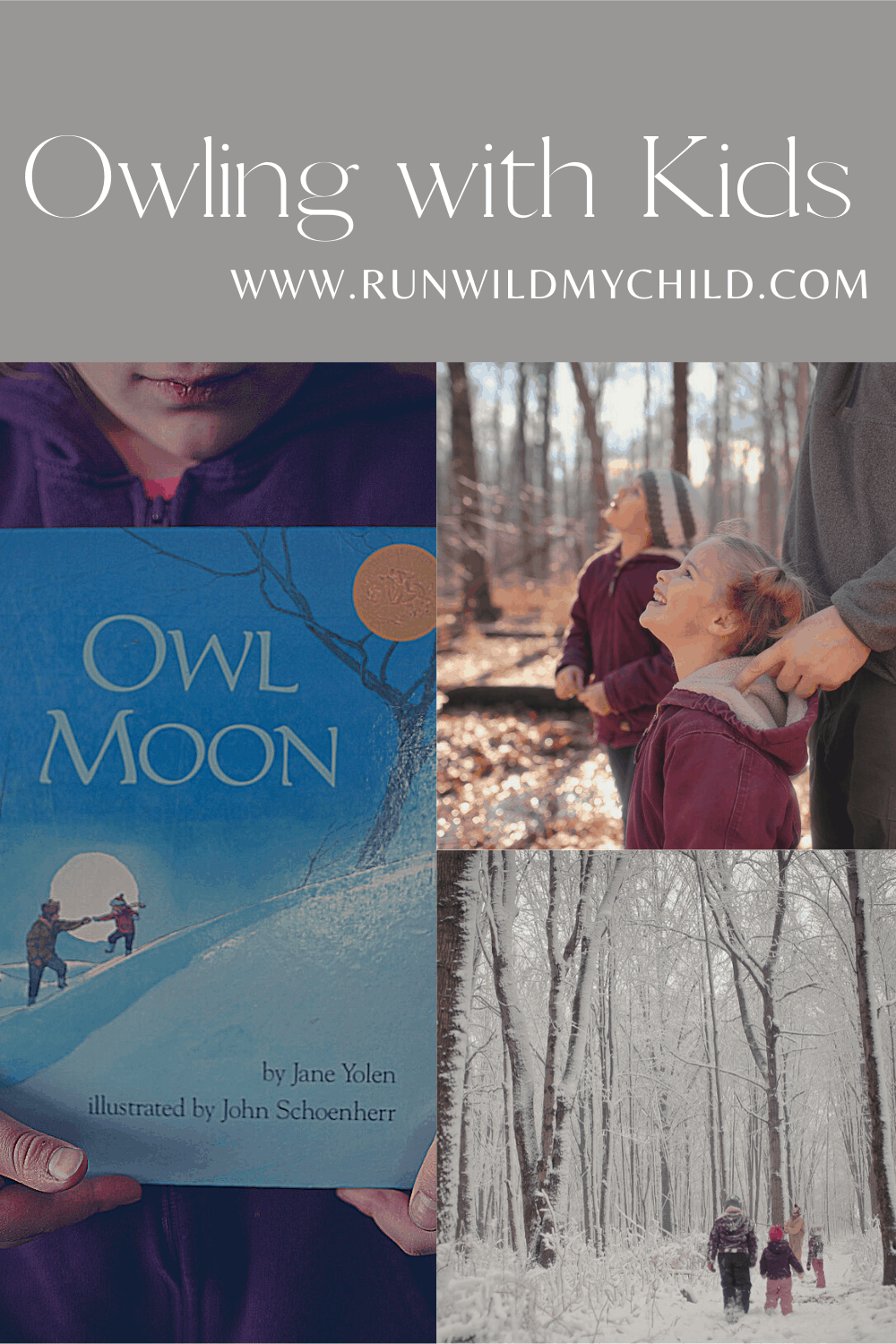
“When you go owling,
you don’t need words
or warm
or anything but hope.
That’s what Pa says.
The kind of hope
that flies
on silent wings
under a shining
Owl Moon.”
Owling inspiration
When I was growing up, my mom had a beautiful collection of illustrated nature books she read aloud to us. One was Owl Moon, a simple yet fascinating first-person story of a young girl going out owling with her father under a full moon in deep winter. They walk and watch and call until an owl replies. Eventually, they spot the majestic owl swooping above them in the bare tree branches. Owl Moon was one of the first books she bought for my own children, and it’s one of our favorites.
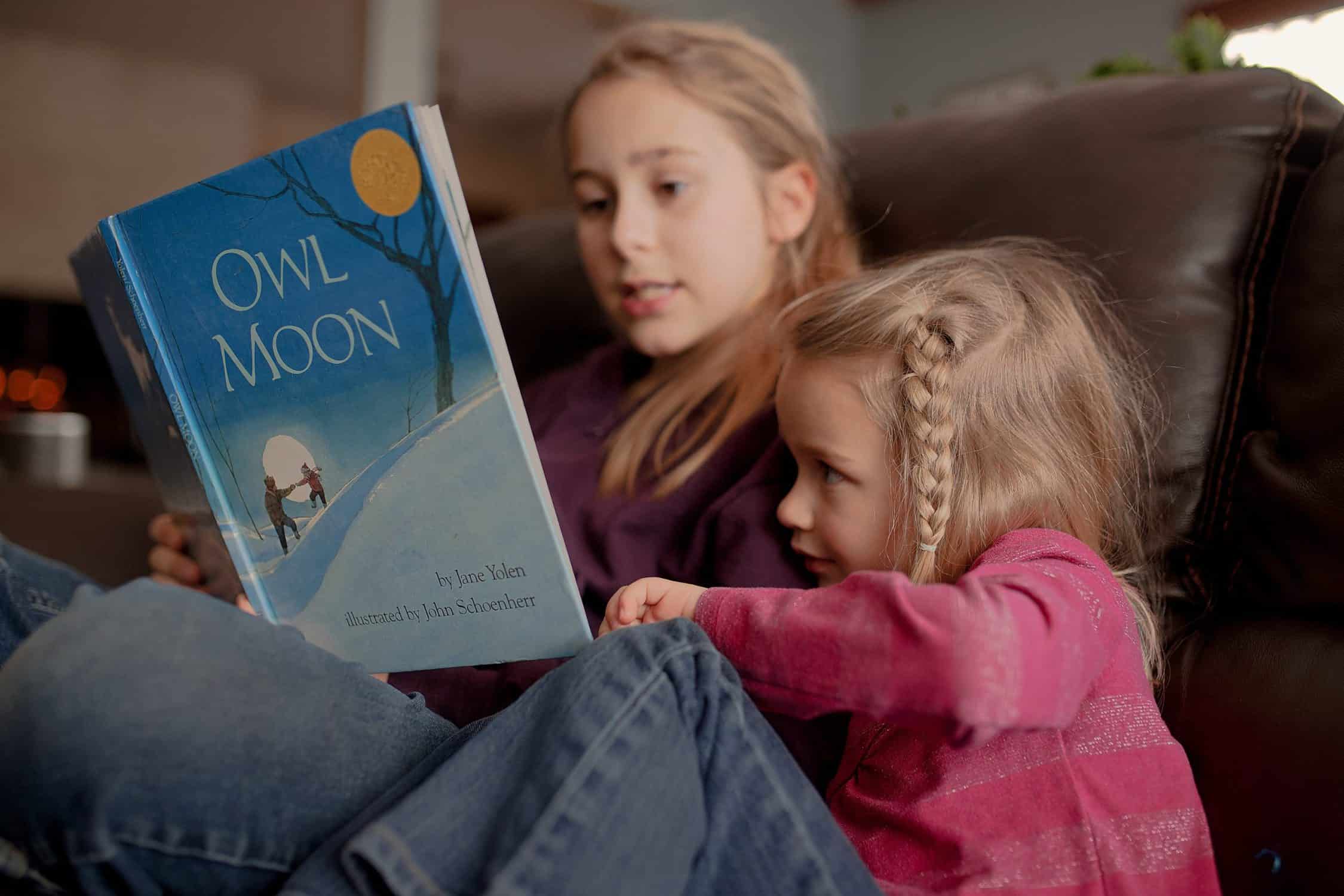
Owling with kids
The sweet story told in Owl Moon brings nature close. It always makes me want to go owling too, tromping in the snowy woods by moonlight. But, even though I grew up in the country, somehow I never realized until this past year that I can go owling with my kids—and so can you!
Owls are fascinating creatures. Day or night, their haunting calls are enough to make you stop in your tracks. There are actually many common owls throughout North America, as well as the rest of the world. And owling is a great nature activity you can do with your kids!
And although a full moon adds light, and snowy woods at night are lovely, you actually don’t need any of those things to go owling. You can go looking for owls anytime (day or night) wherever you live!
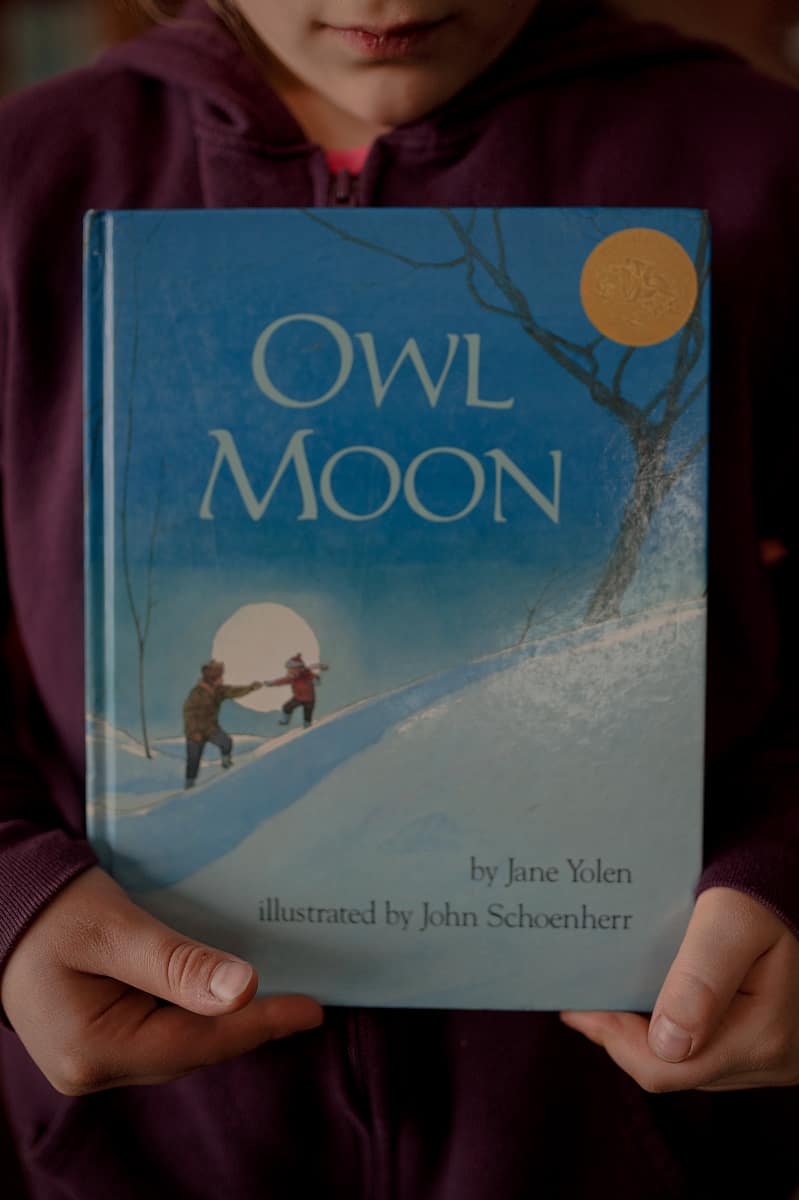
Our first owl encounter
Last February, wanting to return to our country roots to raise our children, my husband and I sold our house in town and moved our children to the country. One of our first experiences on our quiet country road was climbing out of our car at dusk and hearing a startlingly loud, haunting cry from the woods across the road. We all froze.
“Did you hear the owl?” my husband asked our kids, trying to hush everyone who was exclaiming over the weird noise. “That was an owl!” It certainly wasn’t like any owl sound I’d ever heard! Honestly, it was a little terrifying. But there it was—a low hooting off in the distance, followed by an answering cry nearby.
After convincing our five-year-old that it was safe to actually get out of the car (for weeks we had to talk her through the process every time we came home in the dark. She would cover her ears and race inside so she couldn’t hear the creepy owl chatter! But she finally got used to it and now loves to hear the owls call.), we went inside and looked up owl calls.
We learned that we had just heard a Barred Owl pair calling to each other. Sites like this one teach you to easily identify common North American owls by their calls. This little bit of knowledge fueled a desire to learn more about these amazing birds. We’ve been looking for owls, calling owls, and heading out on owling walks ever since.
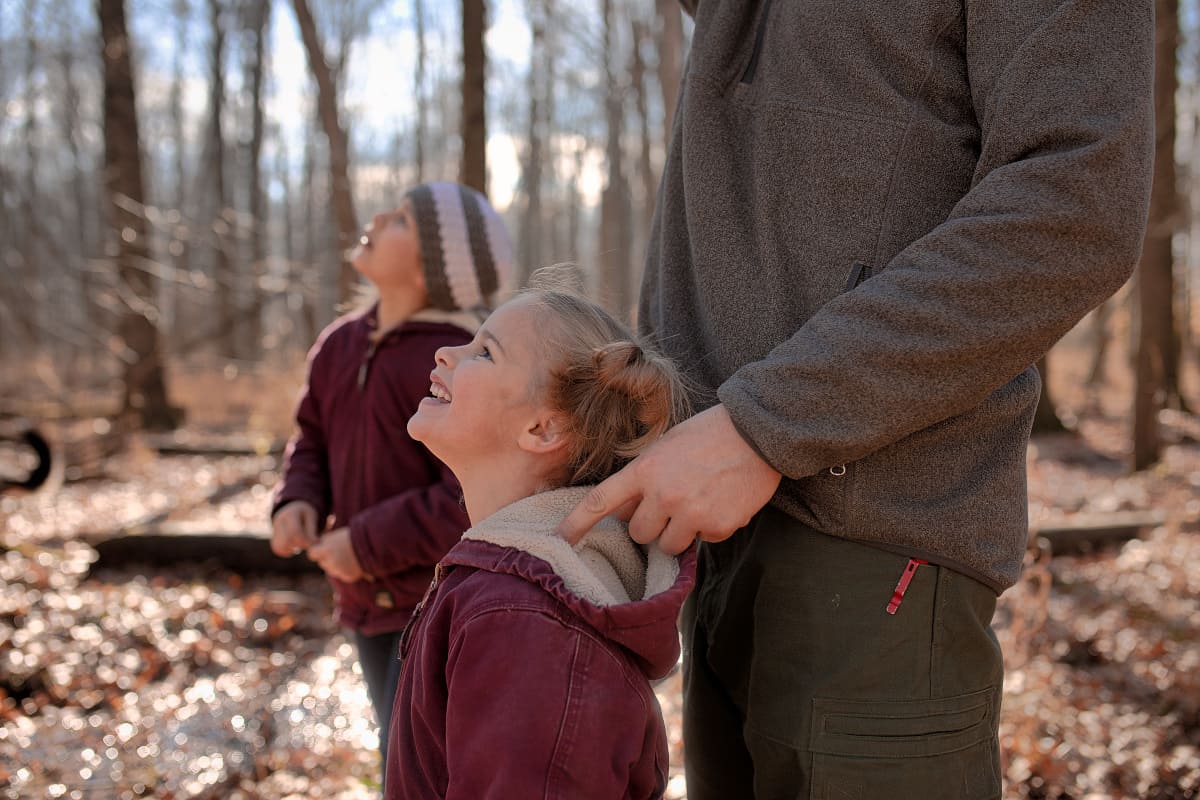
What is owling?
Basically, owling is the practice of calling and searching for owls. Going owling with your kids is an easy and fun nature activity, and seeing (or hearing) one of these majestic birds is an experience they won’t soon forget! The first time anyone in our family actually spotted an owl, my husband and two-year-old were coming out of the woods at dusk when a Great Horned Owl flew across the path in front of them. Our toddler talked about seeing that owl for a long time!
By this point (a year later), we’ve all caught glimpses of these magnificent birds in the woods near our home. Just this morning my son saw one fly out of the pine trees just ahead of us on our walk. Last week we saw a huge pair of Great Horned Owls. The sight of them never ceases to amaze us all.
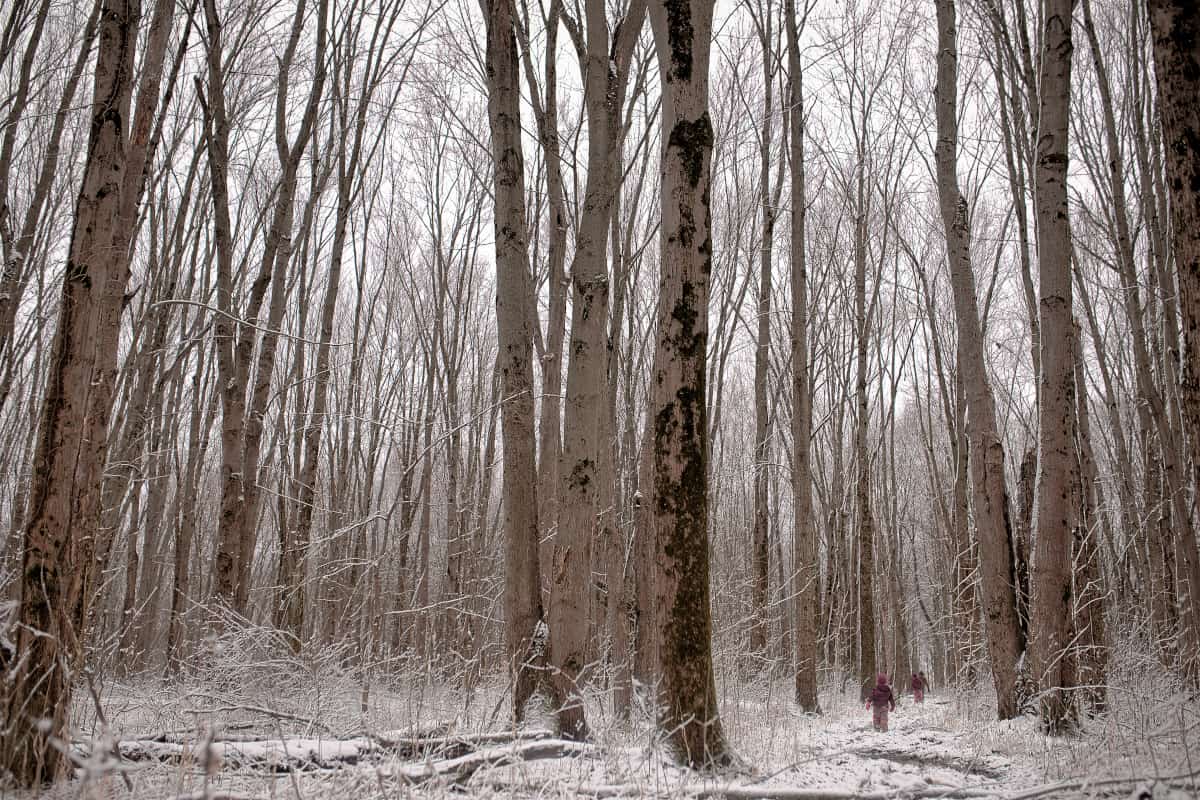
Where to go owling
While owls may be known for being elusive and hard to spot, they aren’t as rare as many people think. You simply have to learn where and when to look. You can find owls in many places, from forests and deserts to mountains and prairies. Owls love wooded areas, but many also live close to cities and suburban areas because of the ready food supply. They often live in trees (often conifers) and eat small rodents, so owls can be found almost anywhere those things exist—even in Central Park in New York City!
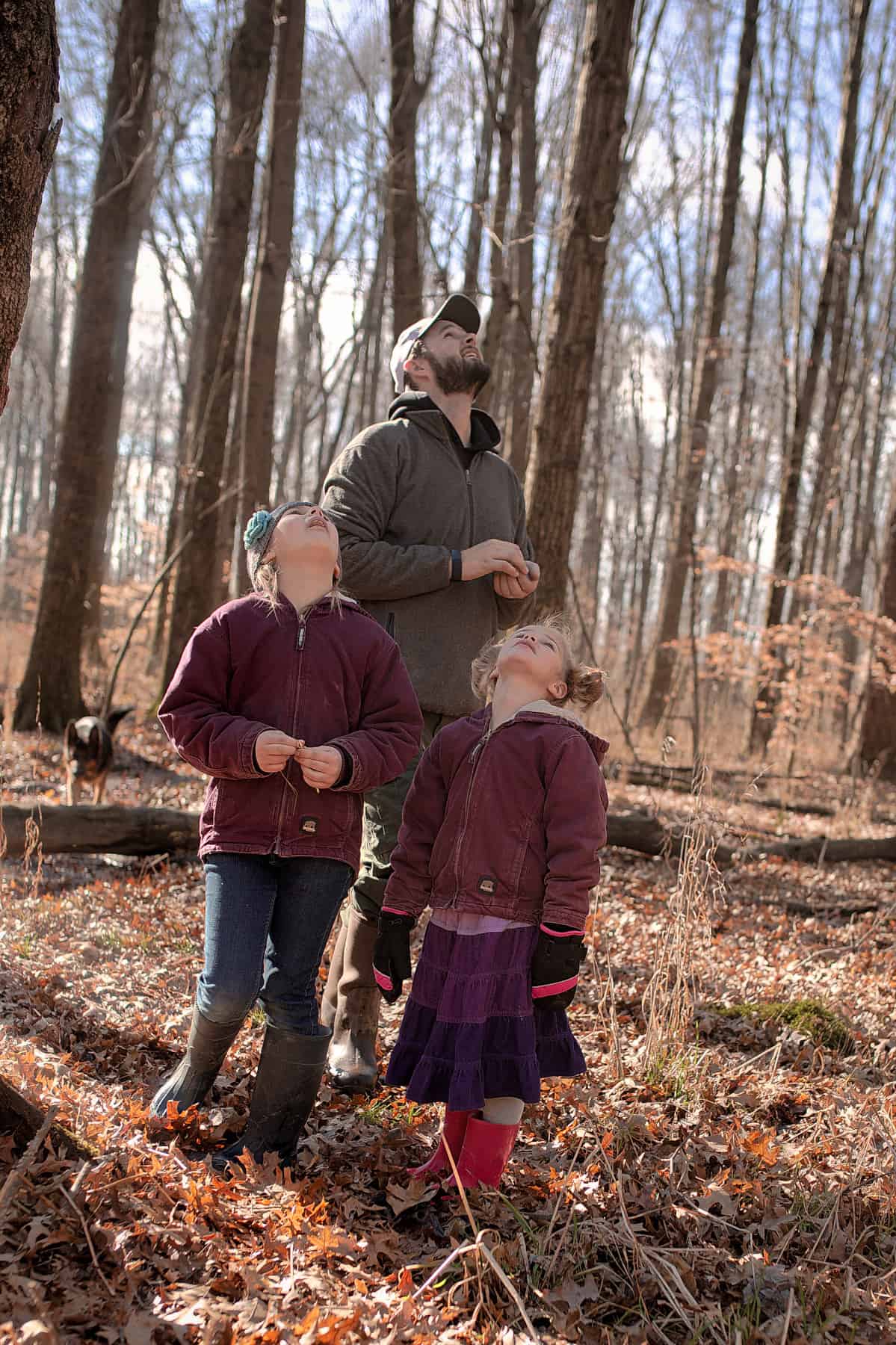
When to go owling
Owls become especially active during mating season in winter. The colder months are a great time to go owling because you are more likely to see or hear owls. Plus, the lack of foliage makes seeing the owls easier. During the summer months, we were afraid the resident owls in our area had moved away because we didn’t see or hear them for a long time. But, as fall drew on, we began to hear “our” owls again. We’ve even heard the parents calling back and forth with a juvenile offspring.
As I mentioned, most owls are nocturnal, which means they do much of their hunting and calling at night. However, it doesn’t have to be pitch black outside for you to go owling! We’ve spotted Barred Owls sitting on power lines near our home in the middle of the day. We’ve seen owls swooping from tree to tree in the woods, and often hear them calling, especially as winter days draw to a close.
Despite their close proximity, I’ve never yet been lucky enough to get a photo of one. That’s a testament to my lack of wildlife photography skills, not to the absence of owls. Maybe someday I’ll be able to capture a photograph of one of these beautiful birds.
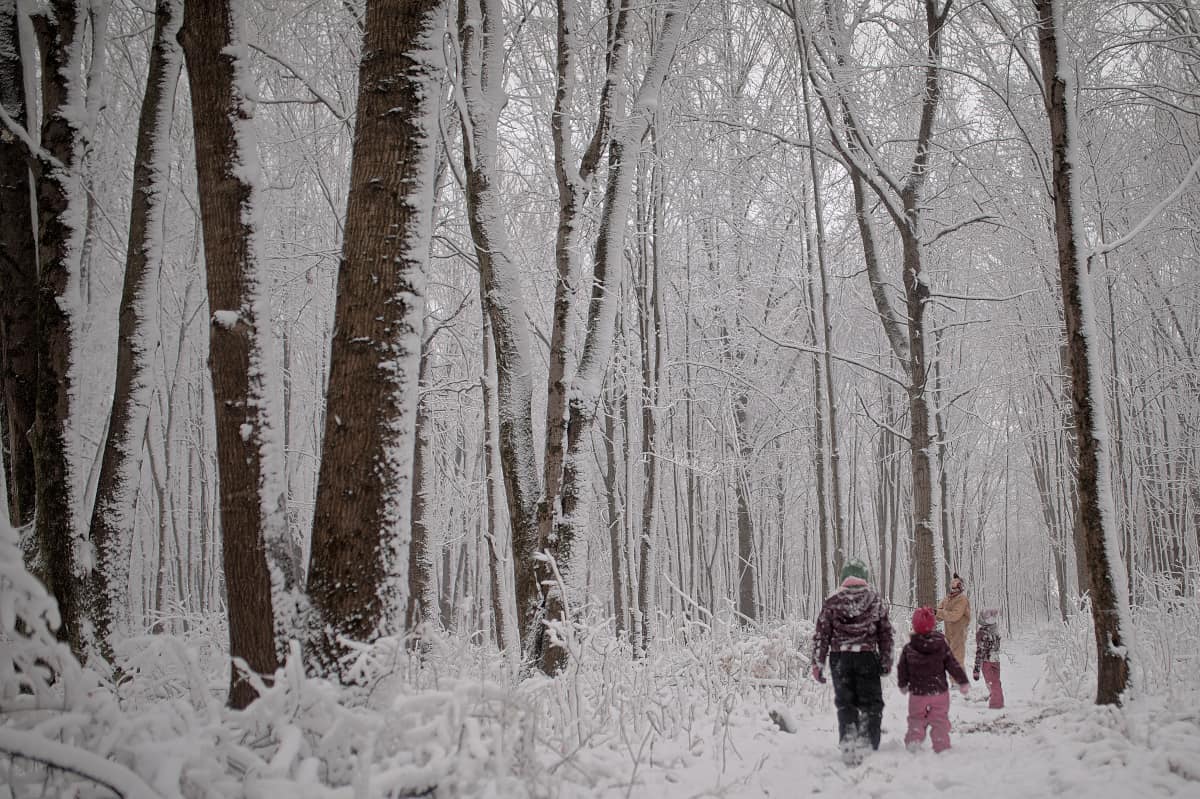
Daytime owling
One day as we explored the woods, we noticed a commotion of birds in a stand of tall pine trees. Crows and other smaller birds were calling raucously and diving in and out of the trees. I had heard that smaller birds will sometimes “mob” owls in this fashion, so we headed that way to see if we could spot one. Sure enough, as we approached, a Barred Owl swooped out of the trees to go look for a quieter location!
It might have been the high point of our nature walk if our dog hadn’t flushed out a white-tailed deer just then. Our owl sighting dropped dramatically in importance as my son and I took off chasing the dog, who took off chasing the deer, howling all the way. At the end of that misadventure, I was just glad to have everyone, including the dog, all in one piece!
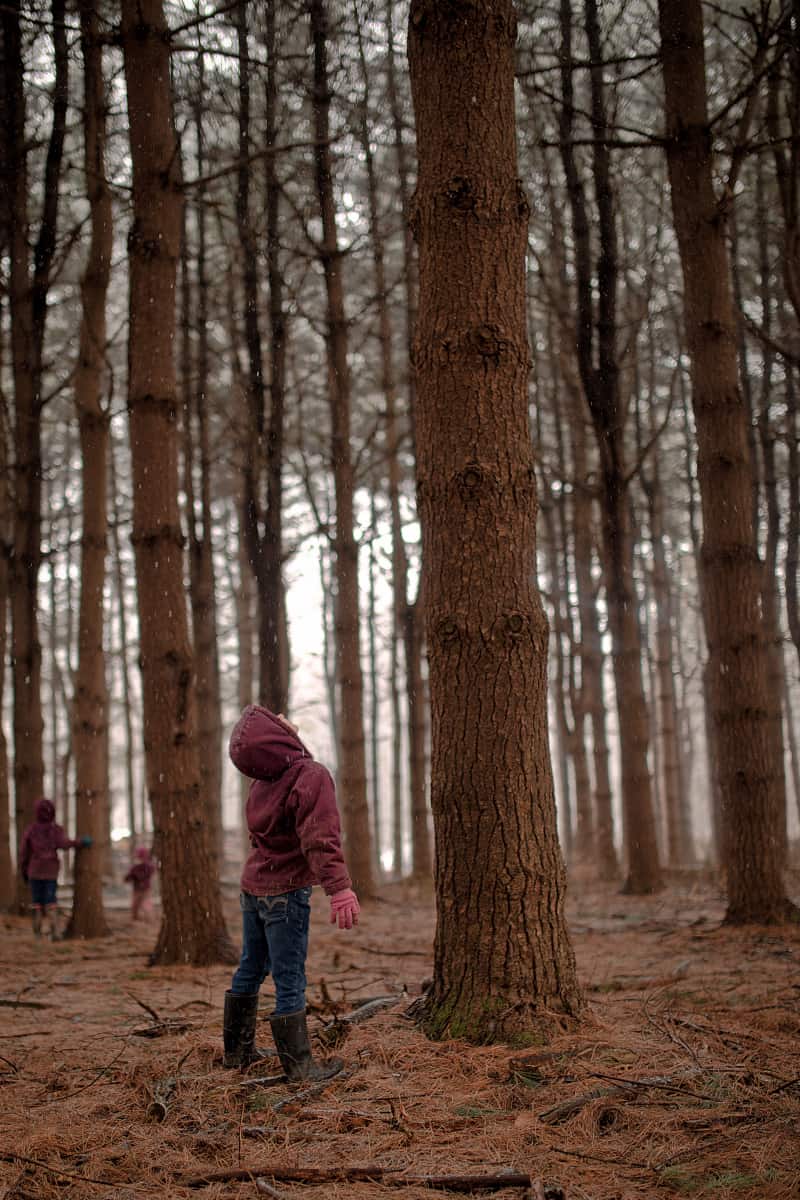
Owling at dusk
Owls do become noticeably more vocal as twilight approaches. The hour before sunset is a great time to go owling with kids if you don’t want to be out at night. It’s also a good time to try owling at local parks or trails, which may close at dark. Park rangers can be a great source of information about owls in their area. If you go to a public place wanting to find owls, ask around! There may be someone who knows just when and where to look.
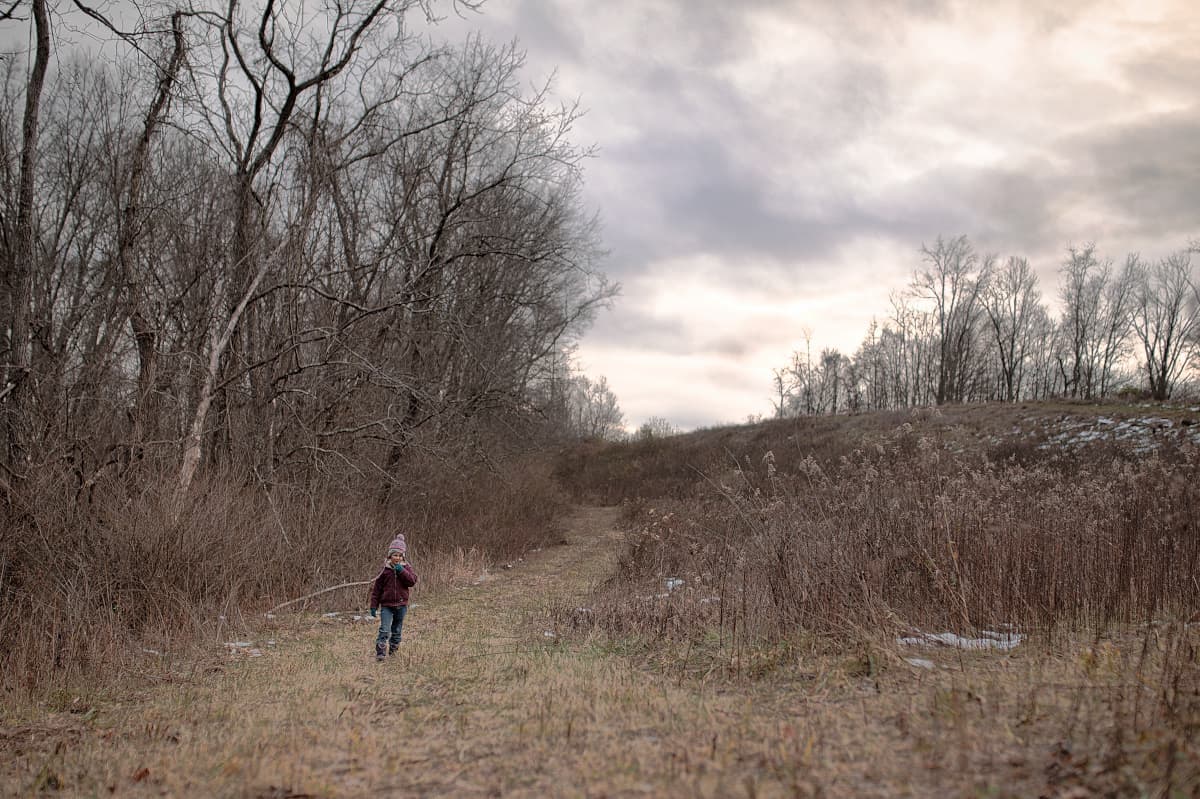
How to look for owls
Searching for owls can be a bit tough and you have to have patience and good detective skills. Owls leave a couple of distinct signs of activity in the woods. If you know what to look for, you’ll have much better luck spotting one.
First of all, you can look for “whitewash” (owl excrement) on tree trunks. An owl’s excrement is chalky and white and can usually be found at the bottom of a tree that an owl is roosting in. You can also look at the base of trees for owl pellets, which are prized treasures for curious little ones. Owl pellets are small bits of indigestible hair, bone, etc. from an owl’s meal.
Finally, look for owl feathers lying on the ground. Owl feathers are large and are very soft. If you need help identifying the type of bird by a feather, check out the US Fish & Wildlife Service’s Feather Altas – a free online tool to identify feathers.
We have been able to find owl trees in our woods by looking for these signs. Some common owls, like Barred Owls and Great Horned Owls, like conifer trees, in particular, so check those a bit closer. Check out this article for more information about where and how to find owls. It’s full of helpful tips for owling.
Owl pellets
Owl pellets are a sure sign that owls are in the area. As mentioned, an owl pellet is made from indigestible material left in the gizzard (such as teeth, bones, skulls, claws, and feathers) are too dangerous to pass through the rest of the owl’s digestive tract. To safely excrete this material, the owl’s gizzard compacts it into a tight pellet that the owl regurgitates.
It may sound gross, but dissecting an owl pellet is a really fun activity for kids, as they can see what the owl ate and sometimes find the bones and teeth of small animals. Although their diet largely depends on the species of owl, most owls like to eat insects, small mammals (like hares and rabbits), and other smaller birds. It is also common for owls to eat rodents, squirrels, bats, weasels, woodchucks, and even a domestic cat!
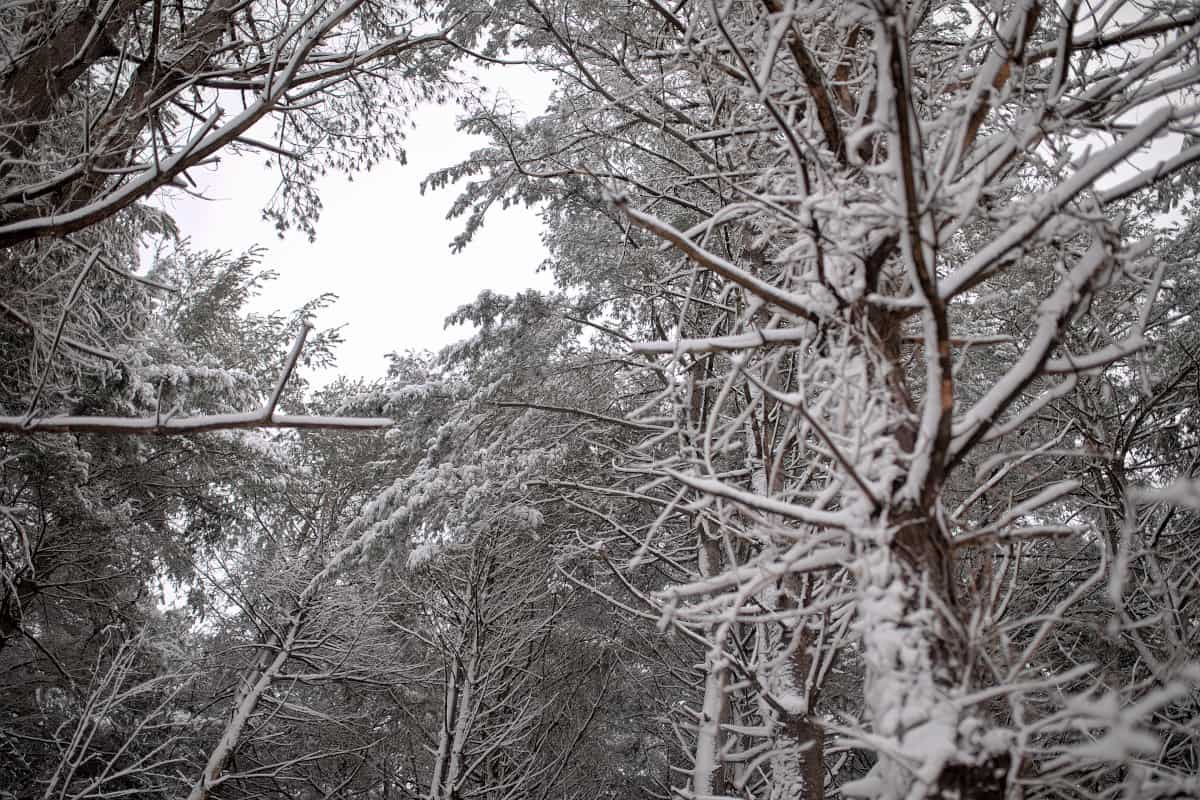
Owl nests
Did you know that owls do not build their own nests? Instead, they occupy nests left behind by other birds. Look for owl nests up high in the crooks and hollows of trees, any of the usual places you might spot a nest.
You can even build nesting boxes to attract owls to your own backyard! Screech Owls are considered the easiest owls in North America to attract with a nesting box. You can find directions for this simple DIY project here. We have plans to build a Screech Owl box for our homestead property, and maybe even add a barn owl box to the loft of our barn as we build it. Some of the wooded environment near our property is changing and threatening the natural habitat of the owls, so we want to encourage them to stay close by.
Spotting an owl
Hopefully, you get the chance to spot an owl on your owling adventure. They definitely look different than other birds and while they may be hard to spot, they will be easy to distinguish. Most owls have notably large eyes, a flat face, a large head, and a small, downturned hooked beak. They have very sharp talons with four toes and one is opposable (like the human thumb), which helps the owl grasp things like tree branches and food.
Although owls vary in color, size, and appearance, they have one interesting ability in common – they can turn their heads an astonishing 270 degrees due to more vertebrae than other birds.
And if you’re listening, you’ll notice that not all owls make that infamous “hoot” sound. Owls can actually make many different sounds – they can screech, hiss, and even growl! But despite the sound they make when they call, they make no sound when flying. This silent flight is due mainly to very broad wings and special flying feathers that limit noise when an owl flaps its wings.
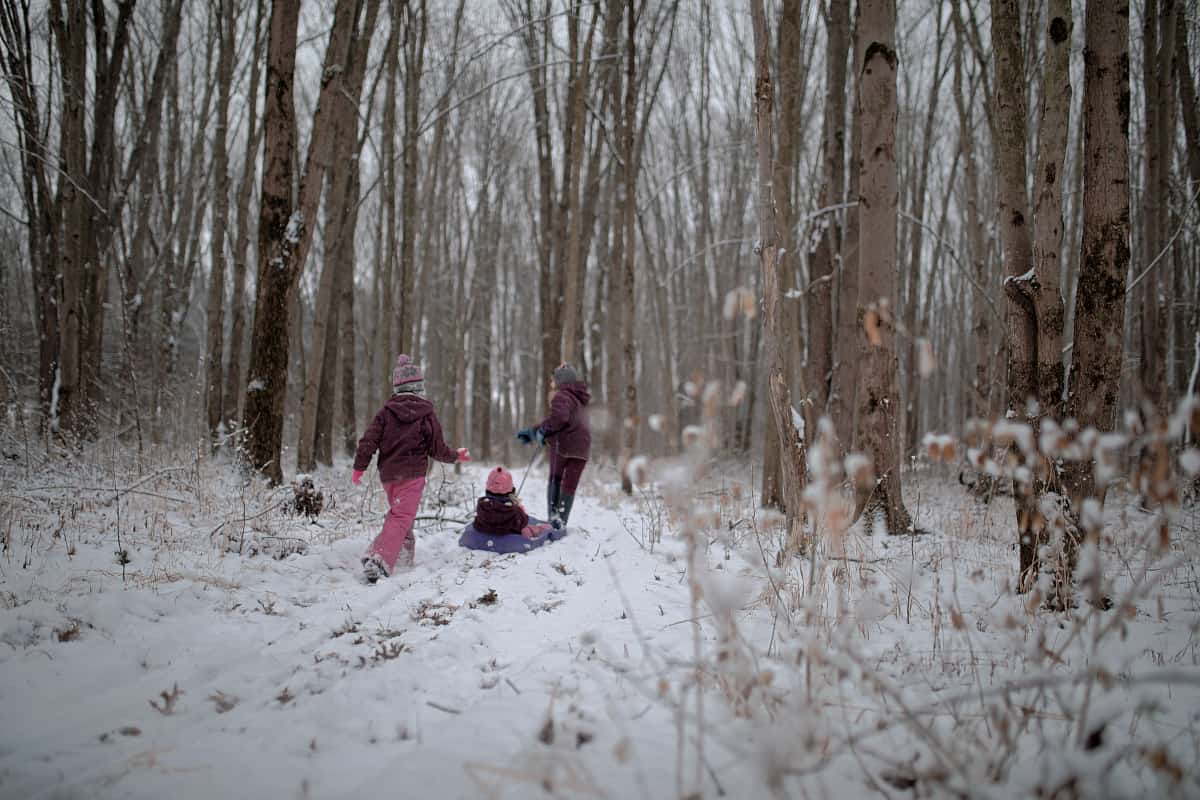
Owling essentials
You don’t need anything special to go owling, but a pair of binoculars can be useful. Other than that, you just need some sharp eyes and ears, a sense of adventure, and your detective skills.
If you hope to call for owls, work out your plan ahead of time with your kids. Do you want them to walk into the woods silently, trying not to scare away the owls? At least in our family, that has to be clearly explained! Otherwise, the owls are going to be scared away by wild yelling long before we can see them. Are you going to designate one person to try hooting? Take turns?
I’ve learned that if you don’t have a clearly communicated plan, the owling walk will quickly become a hooting free-for-all! And although Barred Owls, in particular, will respond to imitation calls—even not very good ones—no owl is going to be fooled by 3 or 4 different pitches of hooo-hoooo-hoooing simultaneously.
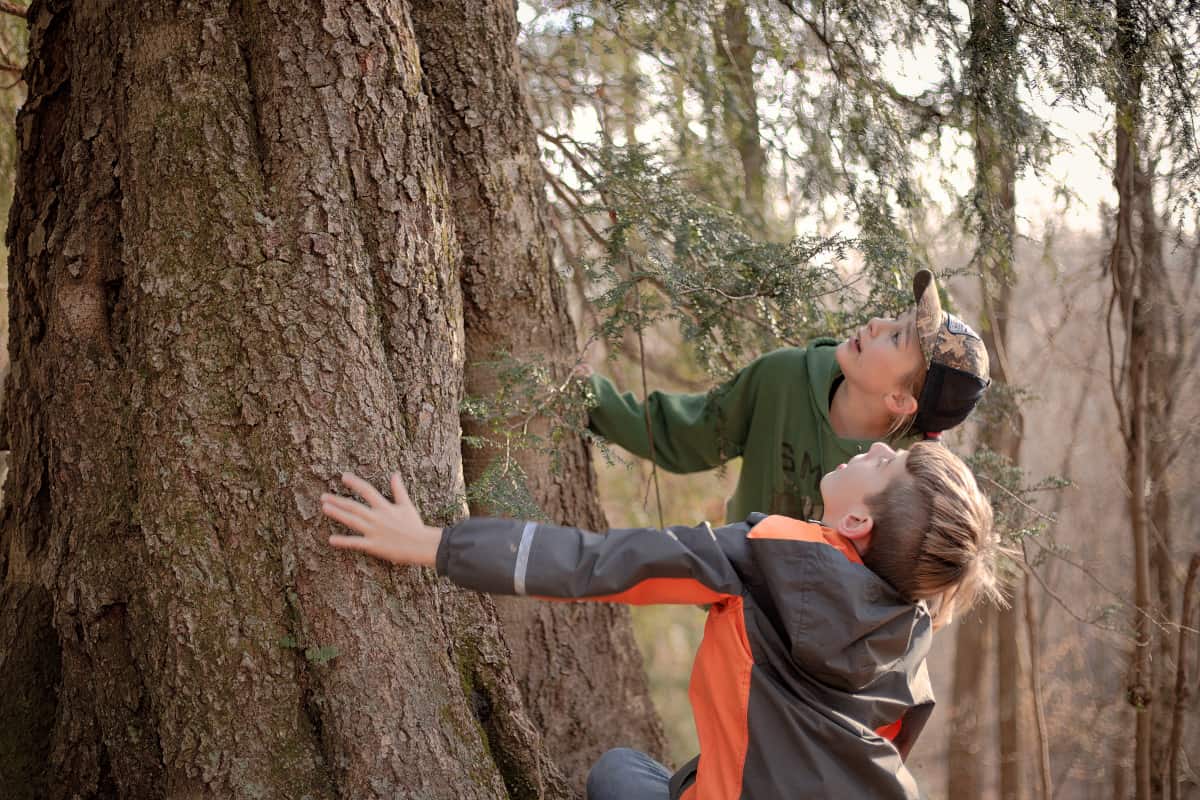
Common owls
There are 19 species of owls are found in North America, including the following: barn owl, burrowing owl, eastern screech owl, great grey owl, spotted owl, and the long-eared owl, among many others. These owls not only live in wooded, rural areas, but also in suburban areas with trees. I’ve read that owls can be found commonly in cemeteries, since many cemeteries contain both large trees and also open areas where it’s easy for owls to spot their prey.
To learn more about owls in your area, check out this site about owling. It’s full of detailed information about owls all across North and Central America.
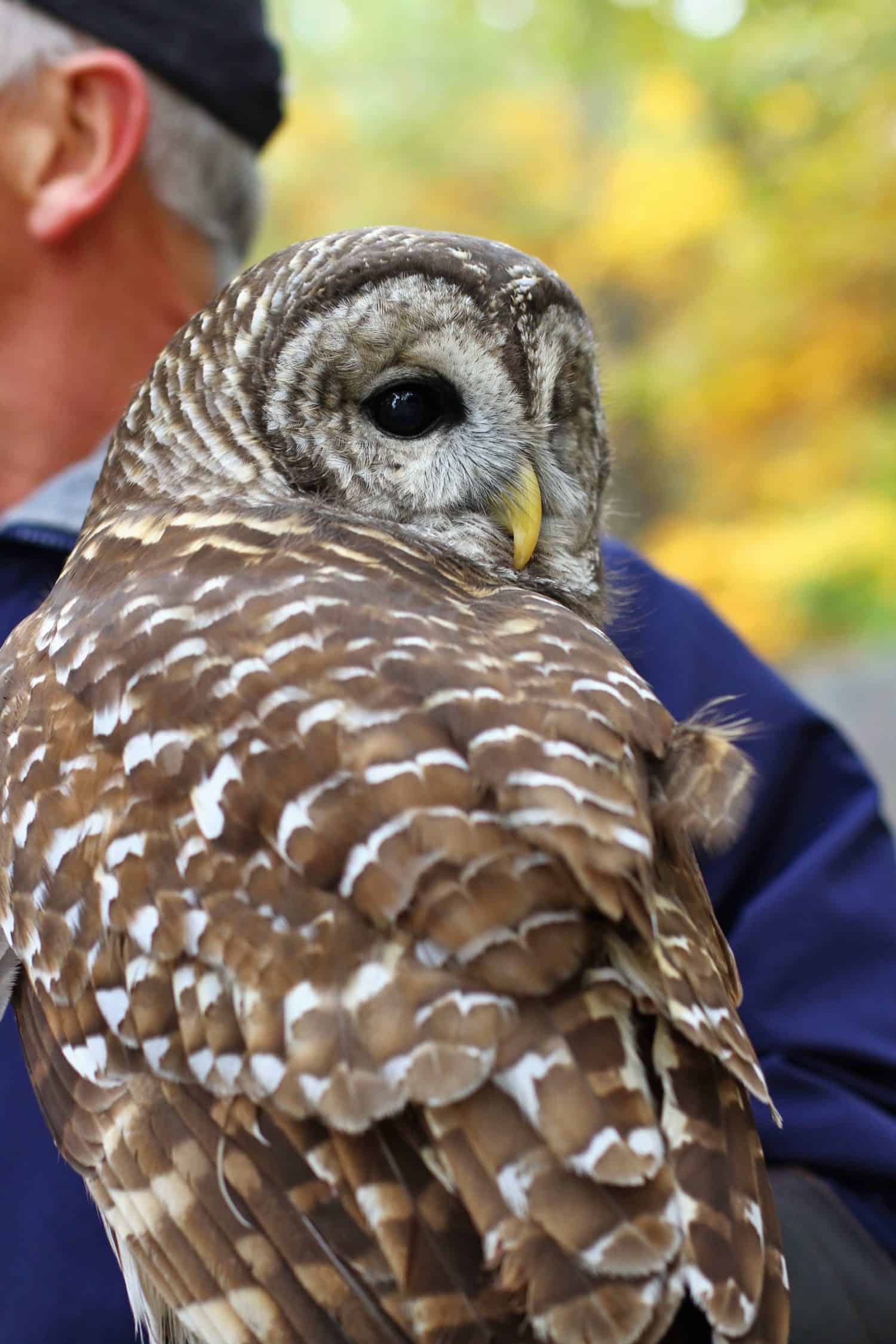
Make owling a family activity
Exploring the woods and hiking around while owling is such a fun and easy outdoor activity to do with kids. You don’t need any special gear or equipment to do a little owl hunting. Before you head out, just be sure to do a little research about what owls can be found in your area and when they are most active. Listen to an owl call and practice your “hoo’ing!” If you’re owling during the day, look for whitewashed tree bottoms, owl pellets, or feathers that could indicate an owl’s presence. If you find one (and it’s possible), try going back there during the night to see if the owl is active.
Finally, a word of caution: you may not always see an owl when you go owling. As the little girl says in Owl Moon,
“That’s how it is when you go owling.
Sometimes you see one, sometimes you don’t.”
Be prepared to enjoy whatever wildlife you do see—you’re bound to spot some beautiful birds, squirrels, animal tracks, and other fascinating bits of nature. So, make it an adventure, have fun, and enjoy the beautiful world out there!
Have you ever gone owling?
What did you see?

About the author
Leslie is an Ohio farm girl and chaser of light, children, and sometimes chickens. She’s a lover of Jesus, wife to her high school sweetheart, and a homeschooling mom of four wild rascals who love the great outdoors as much as she does. As a family, they love hiking, camping, fishing, and just about any outdoor activity. She and her husband are just beginning the process of building a homestead from the ground up, doing most of the work themselves. Leslie has a lifelong obsession with writing and capturing everyday life from behind the lens. You can follow along with their homesteading, homeschooling, and everyday adventures on her Instagram account.
You can find more from Leslie in the following locations:
Instagram: @c_l_allofus
Client work: @lalvisphotography
RWMC posts: Leslie Alvis








1 comments